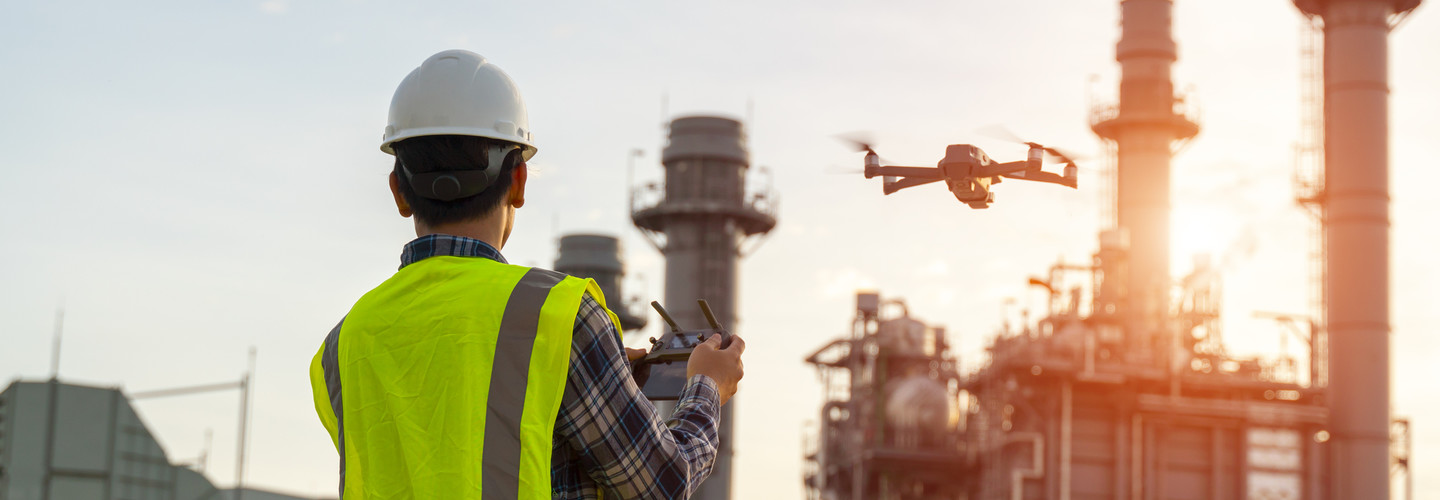6 Benefits of Drones for Utilities and Energy Companies
With far-flung facilities, often in settings with rough terrain and other difficult conditions, companies in the energy and utility industries face serious challenges as they inspect, monitor and maintain their assets. As unmanned aircraft systems (UASs, or drones) have become more sophisticated and reliable, they have emerged to offer valuable capabilities that can help energy and utility companies.
By taking dangerous tasks out of the hands of humans, drones can greatly improve safety. Fur-ther, capabilities such as powerful cameras and other sensors enable drones to do many jobs more quickly, accurately and efficiently than human workers.
Here are six ways that energy companies and utilities are benefiting from drone technology.
1. Improve the Safety of Inspections by Avoiding Dangerous Conditions
Utility workers often face hazards when conducting inspections, including heights, proximity to high voltage and inclement weather. Some assets, such as wind turbines, are particularly dan-gerous for human inspectors. “The utilization of drones helps keep workers away from private property, aggressive dogs, volatile homeowners or areas that are not adequately maintained,” the online energy marketplace provider Choose Energy notes in a recent article about UAS technology.
DJI, a manufacturer of UAS systems, says its drones can take high-resolution images and shoot 4K video, which helps inspectors spot areas that may need to be repaired, such as cracks or fissures. Further, some of the company’s drones come with advanced sense and avoid technologies, which can prevent collisions in situations with sudden gusts of wind or pilot error.
2. Rev Up Operations with Speedy Drones
Because drones can quickly make their way from place to place through the air, they can dramatically speed up inspection and monitoring tasks. “Drones are 97 percent more efficient than manual inspections for solar farms,” Carmen Smith, vice president of marketing at the aerial intelligence company Measure, tells Choose Energy. “They avoid having workers trek across many acres of solar panels or climb onto roofs, and they complete a detailed inspection of 100 percent of panels in a fraction of the time.”
3. Reduce Labor Costs by Boosting Efficiency
Because human workers take so much longer than drones to complete inspection and monitoring work, the use of unmanned systems can help to cut down the labor costs associated with these tasks. For example, a 2018 article in Drone Examiner notes that a drone can replace the need for staffers who would otherwise have to walk around oil and gas wells with infrared cameras in search of leaks.
Drone manufacturer Yuneec says its drones are capable of inspecting more than 4,000 photo-voltaic panels per hour. By comparison, the average for inspection conducted by a human is roughly 60 panels per hour — meaning a person would take about eight days to complete a task that a drone can do in an hour.
4. Decrease the Risk of Outages
Drones can be used to inspect infrastructure such as substations without requiring a shutdown, minimizing the risk of power outages. For example, Drone Examiner reports on a gas processing plant in Norway that previously had to close down for two weeks every time its 70-meter flaring stack was inspected. Now, inspectors can complete the process in just a few hours using drones, and the plant doesn’t need to close down at all.
5. Survey Potential Sites
According to Drone Examiner, an Oregon utility is using drones to survey potential locations for new solar energy infrastructure. The drones map the area’s topography and use algorithms to find the best place for each solar panel. The process takes 90 percent less time than traditional surveying and design.
6. Track the Progress of Ongoing Projects
In addition to helping to identify new sites, drones can enable utilities and power companies to monitor progress on construction projects. “Not only can drones measure progress in real-time, but they can also improve safety while saving time and money,” Drone Examiner notes.









